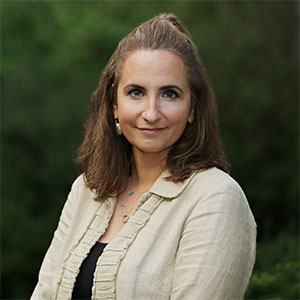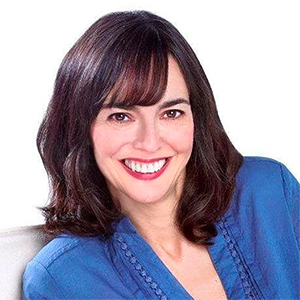5 ways to rethink what a 'balanced diet' means
Published in Mom's Advice
Most of us probably think we have a pretty good idea of what a "balanced diet" looks like. And a lot of us may be wrong.
"I don't love the term," which can give people an outdated or oversimplified idea of what healthy eating looks like, said Dr. Matthew Landry, an assistant professor of population health and disease prevention at the University of California, Irvine.
Some people he's counseled as a dietitian think a balanced meal means "balancing the good and bad foods." That idea troubles him.
"We wouldn't tell someone that they can smoke a couple of cigarettes just as long as they get 60 minutes of exercise during the day," Landry said. "So similarly, we shouldn't tell folks that they should have foods that aren't really nutrient-dense, just as long as they have some vegetables on their plate."
Finding balance in your diet also is more than just adding up numbers, said Dr. Shilpa Bhupathiraju, an assistant professor of medicine at Harvard Medical School in Boston. "If I tell you, 'You should eat so many milligrams of a certain nutrient,' you'll be like, 'Well, what does that mean?'" Even for an experienced nutritionist like her, that's tough to envision.
But a healthy approach to eating doesn't have to be complicated, they said. Here's their advice.
1. Picture the plate
Focusing on nutrient-dense foods is a healthy way to start, Landry said. That is, when deciding what to eat, ask, "Does that really have a lot of vitamins and minerals, or does it not?"
The U.S. Department of Agriculture's MyPlate graphic is generally a good model, he said. Simply put, if you envision your meal filling a plate, half of that plate should be vegetables and fruit. "We should have some kind of grain on there – ideally some whole grains," he said, and then a protein, ideally plant-based.
"That's probably a pretty balanced kind of diet," he said.
American Heart Association dietary recommendations also call for choosing low-fat or fat-free dairy products; using liquid plant oils rather than tropical oils and partially hydrogenated fats; choosing minimally processed foods instead of ultraprocessed foods; and limiting added sugars and salt.
The typical U.S. diet, Bhupathiraju said, has excessive refined grains, added sugars, sodium and unhealthy sources of fat, and not enough fruits and vegetables.
"You need your healthy fat sources, your healthy protein sources, and your fruits and vegetables," she said, and it's the combination that provides balance. "If you're eating whole grains and fruits and vegetables, but you don't have a protein source, that's not good."
2. Don't count on quick fixes
It's natural to look for shortcuts to correct an imbalance. But there's no substitute for healthy eating, Bhupathiraju said, and you can't buy balance in a pill.
"Wouldn't that be great?" she said. "I would be out of a job."
But a healthy eating pattern is about more than any single nutrient, she said.
Eating a variety of fruits and vegetables, for example, provides not only vitamins and minerals, but helpful fiber, which is important for heart health.
Some people might benefit from certain supplements, Bhupathiraju said, but only after checking with a health care professional. In general, Landry said, it's best "to get a healthy plate first, and that can be a way that we get all the vitamins and minerals and nutrients that you'd need."
Similarly, diets that emphasize one particular food are tough to sustain, he said, and might lead to nutritional deficiencies.
"Our bodies are really complex systems," Landry said. So even though fixating on one food might lead to a "quick, short-term" benefit to one measure, such as weight, that imbalance could be unhealthy in another way, such as raising LDL cholesterol.
Bhupathiraju suggested treating trendy diets warily and focusing on eating patterns backed by scientific evidence.
The federal Dietary Guidelines for Americans are one widely used reference. For heart health, diets that score the highest are the DASH – short of Dietary Approaches to Stop Hypertension – pescetarian and Mediterranean diets, according to a 2023 AHA scientific statement.
3. It doesn't have to break the bank
Finding fresh fruits and vegetables can be tough in communities where food options are limited or budgets are tight. Planning can help, Landry said. "Look for sales, coupons and market promotions," he suggested. "Try to purchase in bulk when possible, especially for nonperishable items."
Keep in mind that with fruits and vegetables, "canned and frozen options can be just as nutrient-dense as compared to fresh versions," he said.
In-season produce can be more affordable, Bhupathiraju said. And while gardening is not an option for everyone, she and her family grow some of what they eat. "It's a great way to get the kids involved and for knowing where your food came from."
4. It can be exciting
There's no standard way to do a balanced diet, Landry said.
"I come from Louisiana, so I like to have fish as one of my proteins," he said. That could mean grilling some salmon or tilapia and serving it with some quinoa with roasted vegetables and perhaps a spinach and avocado salad. "And that's a very simple kind of balanced plate."
You have options. Some people might prefer apples, some might go for guava, but "a fruit is a fruit, in any culture," Bhupathiraju said.
She has researched diets from South Asia and Puerto Rico, and she cooks a lot of Indian food at home. So while she prepares a lot of dals – Indian pulses such as lentils, peas and garbanzo beans – a Puerto Rican diet might make use of pinto beans or black beans to get a similar healthy mix of nutrients.
In Indian culture, the healthy oils of choice might be sesame, while in the Mediterranean region, it's olive oil.
"The basic principles remain the same," she said, meaning healthy choices abound. "Just pick your favorite food and add that to the plate."
5. Think beyond the plate
The idea of balance in a meal goes beyond what you're eating, Landry said.
"It's not all about the food," he said, but also how you approach your meals.
When counseling people on making healthy changes to what they eat, he encourages them not to focus on a number on a scale, but to think about how eating well makes them feel better. "We shouldn't lose the joy that we get from eating a good meal," he said.
Landry also encourages people to enlist others for support. He's a fan of the idea of "Together Tuesdays," which emphasizes social connections made over food.
Bhupathiraju also is a proponent of eating as a family, "which means putting your screens away," she said. And she encourages involving kids in the preparation process.
"When you're cooking together as a family, that's when it becomes more fun," she said.
Put another way, a healthy diet doesn't mean one person making themselves a kale smoothie alone. "Maybe you make kale chips with your kids," Bhupathiraju said. "Maybe you make bread, but bake it with whole grains, and maybe top it off with some bran."
For her, the path to balanced eating is about "keeping it simple, keeping it fun, making it a family affair." And with that, she said, "I think healthy eating should be easy."
____
American Heart Association News covers heart and brain health. Not all views expressed in this story reflect the official position of the American Heart Association. Copyright is owned or held by the American Heart Association, Inc., and all rights are reserved.










Comments